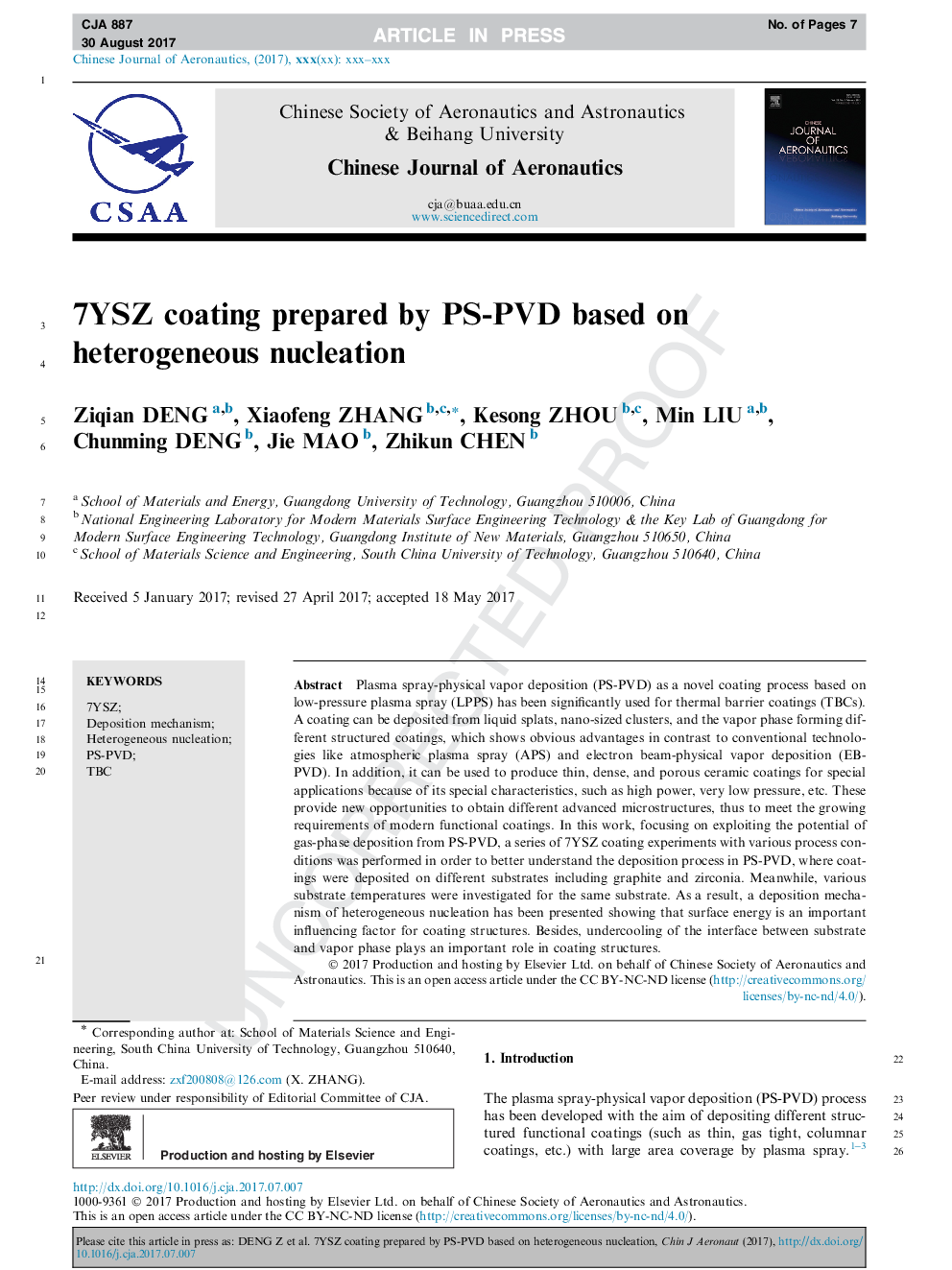| Article ID | Journal | Published Year | Pages | File Type |
|---|---|---|---|---|
| 7153720 | Chinese Journal of Aeronautics | 2018 | 7 Pages |
Abstract
Plasma spray-physical vapor deposition (PS-PVD) as a novel coating process based on low-pressure plasma spray (LPPS) has been significantly used for thermal barrier coatings (TBCs). A coating can be deposited from liquid splats, nano-sized clusters, and the vapor phase forming different structured coatings, which shows obvious advantages in contrast to conventional technologies like atmospheric plasma spray (APS) and electron beam-physical vapor deposition (EB-PVD). In addition, it can be used to produce thin, dense, and porous ceramic coatings for special applications because of its special characteristics, such as high power, very low pressure, etc. These provide new opportunities to obtain different advanced microstructures, thus to meet the growing requirements of modern functional coatings. In this work, focusing on exploiting the potential of gas-phase deposition from PS-PVD, a series of 7YSZ coating experiments with various process conditions was performed in order to better understand the deposition process in PS-PVD, where coatings were deposited on different substrates including graphite and zirconia. Meanwhile, various substrate temperatures were investigated for the same substrate. As a result, a deposition mechanism of heterogeneous nucleation has been presented showing that surface energy is an important influencing factor for coating structures. Besides, undercooling of the interface between substrate and vapor phase plays an important role in coating structures.
Related Topics
Physical Sciences and Engineering
Engineering
Aerospace Engineering
Authors
Ziqian DENG, Xiaofeng ZHANG, Kesong ZHOU, Min LIU, Chunming DENG, Jie MAO, Zhikun CHEN,
